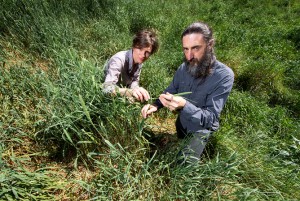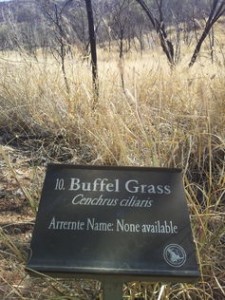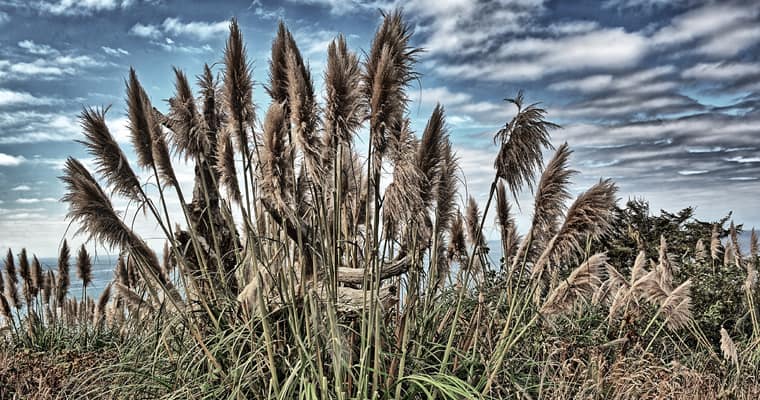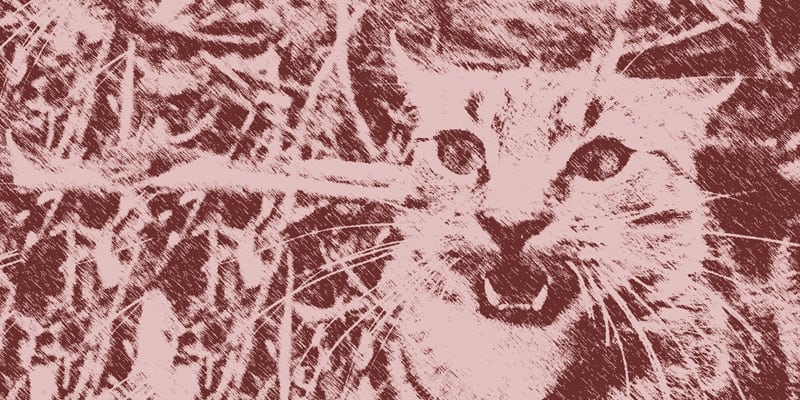
By Don Driscoll, Australian National University and Jane Catford, University of Melbourne
![]() Weeds cost Australian farmers around A$4 billion every year— and they are likely to do a similar amount of damage to the environment.
Weeds cost Australian farmers around A$4 billion every year— and they are likely to do a similar amount of damage to the environment.
In a new global survey published in Proceedings of the National Academy of Sciences, we show that new pasture plants, such as grasses, present a substantial weed risk. You can watch a short summary of our research in the video above.
And despite the risk, new varieties of plants that are known to be invasive are still widely developed and sold in Australia, with little regulation from government.
So, how can we tighten control to prevent the future spread of invasive plants?
Grasses out of control
African lovegrass was used to “improve pasture” in Australia for almost 100 years, but now it is a declared weed in four Australian states and the ACT. African lovegrass has been of little value in pastures, poses a substantial fire risk and threatens a range of native species.
Similarly, Gamba grass was widely promoted by the cattle industry and government in northern Australia, but is now listed as a Weed of National Significance. Gamba grass increases fire intensity five-fold, which transforms native woodlands into exotic grassland and increases the cost of fire management by an order of magnitude.
Introducing these pasture species was a big mistake that Australians will continue to pay for indefinitely. We face increased fire risks, increased management and weed control costs, as well as ongoing loss of our natural heritage.
Have we learned our lesson?
Not yet. Agribusinesses still develop and promote new varieties of species, which are known invasive weeds.
Our new survey of pasture plants reveals that over 90% of taxa developed and sold by agribusinesses are weeds somewhere in the world, and on average 30% are weeds in the country in which they are promoted.
In Australia, these species include Orchardgrass (Dactylis glomerata), Canary-grass (Phalaris species), Tall fescue (Schedonorus arundinaceus), and sub-terranean clover (Trifolium subterraneum). These species are all recognised weeds in Australia, and all promoted by agribusiness for pasture.
Inadvertently breeding super-weeds
These species have already spread throughout much of Australia. But new varieties of the same species can be just as bad, if not worse.
Although they belong to the same species, these varieties can be quite distinct from their parents – just think of the differences between dog varieties like Chihuahuas, Dalmatians and wolves.
The impacts of new pasture varieties in the environment can be substantial, as emphasised in a report “Weed risk set to rise”, to be published this week by the Ecological Society of Australia.
New varieties can be created by cross-breeding different varieties or different species. Another trick to create better performing plants is to manipulate the symbiotic bacteria and fungi that live inside the plants. Engineering plants in any of these ways can lead to varieties with higher reproduction, higher growth rates, better resistance to disease and higher tolerance of environmental extremes.
Unfortunately (but perhaps not surprisingly), these are the same characteristics associated with invasive species. New varieties of pasture plants are bred to grow great pasture, but at the same time, they are inadvertently bred to be super-weeds, perfectly-matched to their environment and planted widely across the landscape.
Producing enormous amounts of pollen and seeds, these new pasture plants can spread quickly and over vast areas, making them very expensive to control if and when they become invasive. So it makes sense to nip the problem in the bud.
Slipping through the cracks
Australia has a world-leading biosecurity system, but new, suped-up plant varieties slip through the cracks.
In Australia, we assess weed risk before new species are imported, and have a list of prohibited species of the world’s worst weeds.
The problem here is species. Exotic species that are already present in Australia are not assessed and are permitted ongoing entry, even if they are known to cause harm. New varieties of such species are not subject to any scrutiny, so are automatically given the green light for development and widespread release.
In a nutshell, Australia already has an enormous weed burden that is destroying our natural heritage, increasing fire risk, and multiplying the costs of land management. Unregulated development and release of new varieties of pasture plants that are already environmental weeds will make the weed problem worse.
One person’s weed, another person’s feed

A key problem is the widespread conflict within government, where one section of government lists pasture plants as a threatening process, and other parts effectively promote invasive pasture plants for use by the livestock industry.
For example, Buffel-grass is causing widespread damage to Uluru Kata-Tjuta National Parks. But the Northern Territory government promotes Buffel-grass for pasture.
The federal government still has sites listing the pros and cons of Buffel-grass as a pasture, while developing ways to prevent the introduction and spread of new Buffel-grass varieties.
So we need a way of measuring the social, economic, and environmental costs and benefits of these plants, which could help unite the different sections of government.
Four steps to stopping super-weeds
Besides better accounting for the costs and benefits, there are four more steps governments can take.
First, Australia needs to expand its list of prohibited and permitted species to include plant varieties. This would enable distinctions to be made between varieties of pasture species that are benign and those that are invasive.
Second, government could expand its world-leading weed risk assessment protocols to apply them to new varieties that are proposed for either import or release after development within the country.
Third, a new program is needed to monitor new varieties that are released and if they become invasive, to rapidly respond to eliminate the threat.
And the fourth point stems from the question: who should pay for the costs of managing new pasture plants and for cleaning up the mess if any escape? We suggest that government needs to implement a polluter-pays scheme.
Polluter-pays for weeds?
The likely reason that agribusiness and government agricultural departments don’t consider the weed risk of their products is that they are not held accountable for the environmental damage their products cause, or the cost of managing invasive pasture species.
A polluter-pays system might include a combination of industry-wide levies such as the mining rehabilitation fund in WA, or environmental insurance, which is already available to polluting industries.
Agribusiness could take up opportunities to integrate weed risk assessment into their development programs, with the aim of developing varieties with low weed risk. The former Future Farms Cooperative Research Centre pioneered this approach, proving that development for agriculture can work together with environmental responsibility.
Agribusiness could also tap into environmentally-aware markets by developing a weed-free certification scheme for their products, and the same potential exists for certified farm products.
Farmers could also contribute to improving stewardship of their land by refusing to buy new pasture varieties that have a high weed risk.
As our tropical savannas succumb to Gamba grass fires, as our arid woodlands vanish under Buffel-grass wastelands, and as native species vanish from the few remaining Box-gum woodlands degraded by introduced pasture plants, it seems like common sense to stop making these kinds of problems worse.
This article was reproduced from an article originally published on 4 November 2014 on The Conversation.
Don Driscoll receives funding from the ARC Center of Excellence for Environmental Decisions and the National Environmental Research Program Environmental Decisions Hub.
Jane Catford receives funding from the Australian Research Council and the ARC Centre of Excellence for Environmental Decisions.




